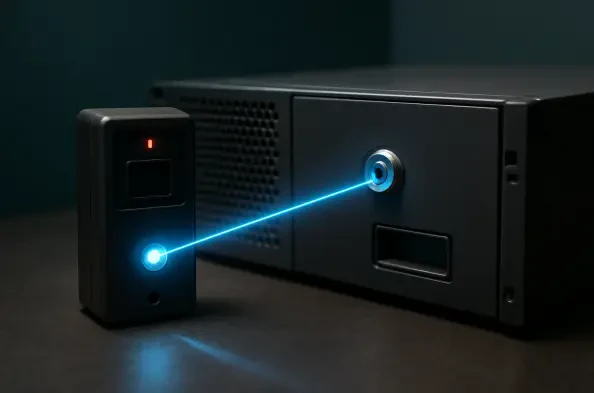In an era where data breaches and cyber threats loom larger than ever, a groundbreaking development from Kyoto University offers a glimmer of hope for unassailable security, promising a world where sensitive information is protected by the immutable laws of physics. Imagine a scenario where medical records and financial transactions are safeguarded not by complex software algorithms but by quantum communication, a field that has taken a significant step forward with a novel technology developed by researchers in Japan. Their innovation centers on a tiny light source capable of emitting photons one at a time, forming the backbone of a security system that could render unauthorized access virtually impossible. By harnessing the peculiarities of quantum mechanics, this advancement challenges the vulnerabilities of traditional cryptography and paves the way for a new frontier in safeguarding data. The implications are profound, potentially transforming how industries and governments protect their most critical information.
Unveiling Quantum Security Innovations
Harnessing Single-Photon Emission
At the heart of this technological leap is the creation of a single-photon emitter using a semiconductor material known as WSe₂, which is just one atom thick. Researchers at Kyoto University have engineered specific defects in this material to trap excitons—pairs of electrons and their corresponding vacancies. When these excitons relax, they release photons individually, a crucial feature for secure quantum communication. What sets this development apart is the application of a modest magnetic field to boost the emitter’s brightness through a process called magnetic brightening. This technique activates previously dormant exciton states, allowing for more efficient photon production. Measurements have confirmed the hallmark of single-photon emission through a phenomenon called antibunching, providing solid evidence of the system’s capability. This innovation serves as a foundational element for quantum key distribution (QKD), a method that encodes security keys in the quantum states of photons, ensuring that any interception attempt disrupts the system and alerts users.
Advantages Over Traditional Cryptography
The shift from classical cryptography to quantum-based security represents a paradigm change in protecting data. Traditional methods rely on complex mathematical problems that, while currently robust, could be vulnerable to future advancements in computing power, such as quantum computers. In contrast, the approach developed by the Kyoto team leverages the fundamental principles of physics, particularly the no-cloning theorem, which prevents the duplication of quantum states. This means that any attempt to intercept a quantum key would inevitably disturb the system, making eavesdropping detectable. Furthermore, true single-photon sources, as opposed to weakened laser pulses, promise to enhance secure key rates and extend transmission distances, especially over urban fiber networks. This technology aligns with a growing consensus in the field that physics-based security offers a more resilient shield against cyber threats, potentially redefining standards for data protection across sensitive sectors like healthcare and finance.
Challenges and Future Prospects
Overcoming Operational Hurdles
Despite the excitement surrounding this quantum breakthrough, significant challenges remain before it can be widely adopted. One primary limitation is the requirement for cryogenic temperatures, with the current device operating at around -265°C. Such extreme cooling poses practical difficulties for real-world deployment, as it demands specialized equipment and infrastructure that may not be feasible outside controlled lab environments. However, parallel research into alternative materials, such as hexagonal boron nitride and silicon nitride, offers hope. These materials have demonstrated the ability to emit single photons at room temperature, suggesting a path toward more accessible solutions. Additionally, the need for brighter and purer emitters that are compatible with telecom wavelengths remains a critical focus. Addressing these operational constraints is essential to transitioning this technology from experimental setups to everyday applications in high-security settings like data centers or government communications.
Scaling for Real-World Impact
Looking ahead, the journey toward practical quantum communication systems involves several key priorities. Researchers are diligently working to identify stable emitter materials that can withstand varied conditions without compromising performance. Improving the coupling of photons to fiber networks is another vital area, as efficient transmission is crucial for long-distance secure links. Field tests in metropolitan areas have already shown promising results, with on-chip single-photon sources successfully facilitating quantum key transmission over city fiber networks. These real-world demonstrations highlight the momentum building in the field, as academic and industrial efforts converge to tackle scalability. The long-term vision includes shrinking this technology into compact, pluggable modules akin to network cards, making quantum security accessible for widespread use. While hurdles persist, the rapid advancements and collaborative spirit in the quantum research community signal a future where data protection could be fundamentally transformed by these innovations.
Reflecting on a Quantum Milestone
As the dust settled on this remarkable achievement, it became clear that the work done by the Kyoto University team marked a pivotal moment in the evolution of data security. Their development of a magnet-tuned single-photon emitter, though not yet ready for mainstream adoption, laid critical groundwork for a future where quantum physics safeguarded sensitive information. The strides made in enhancing photon emission through magnetic brightening stood as a testament to the ingenuity driving this field. Looking back, the successful field tests and material explorations underscored a collective determination to overcome existing barriers. Moving forward, the focus must shift to refining emitter stability, boosting transmission efficiency, and integrating these systems into existing infrastructures. Collaborative efforts between academia and industry will be key to accelerating this transition, ensuring that the promise of quantum-secured communication becomes a tangible reality for protecting the world’s most vital data.






